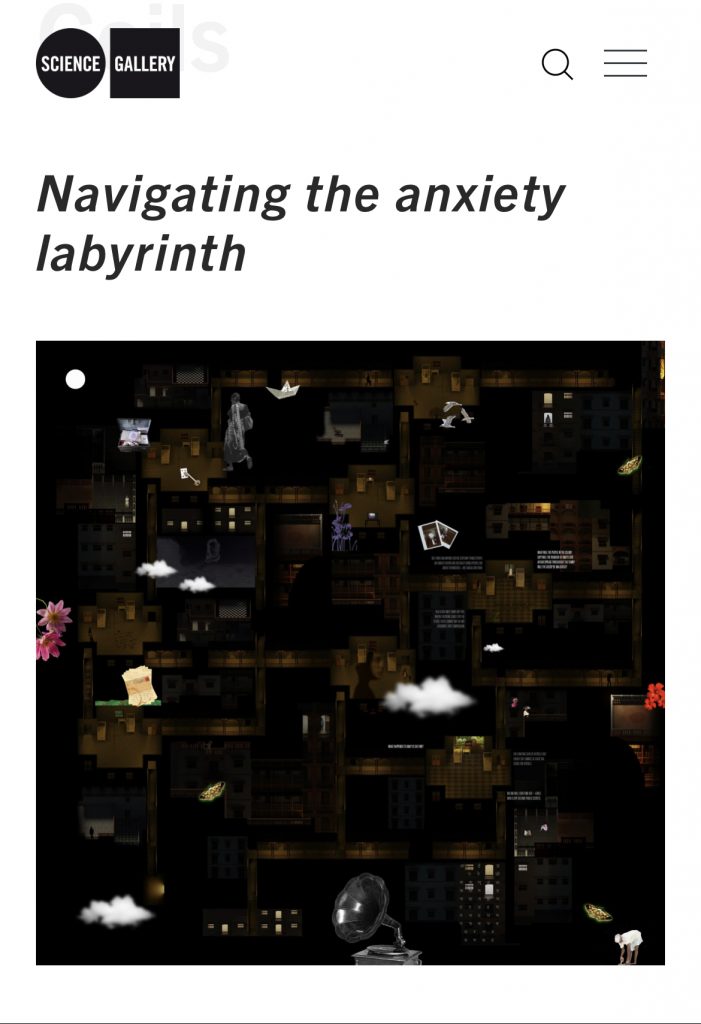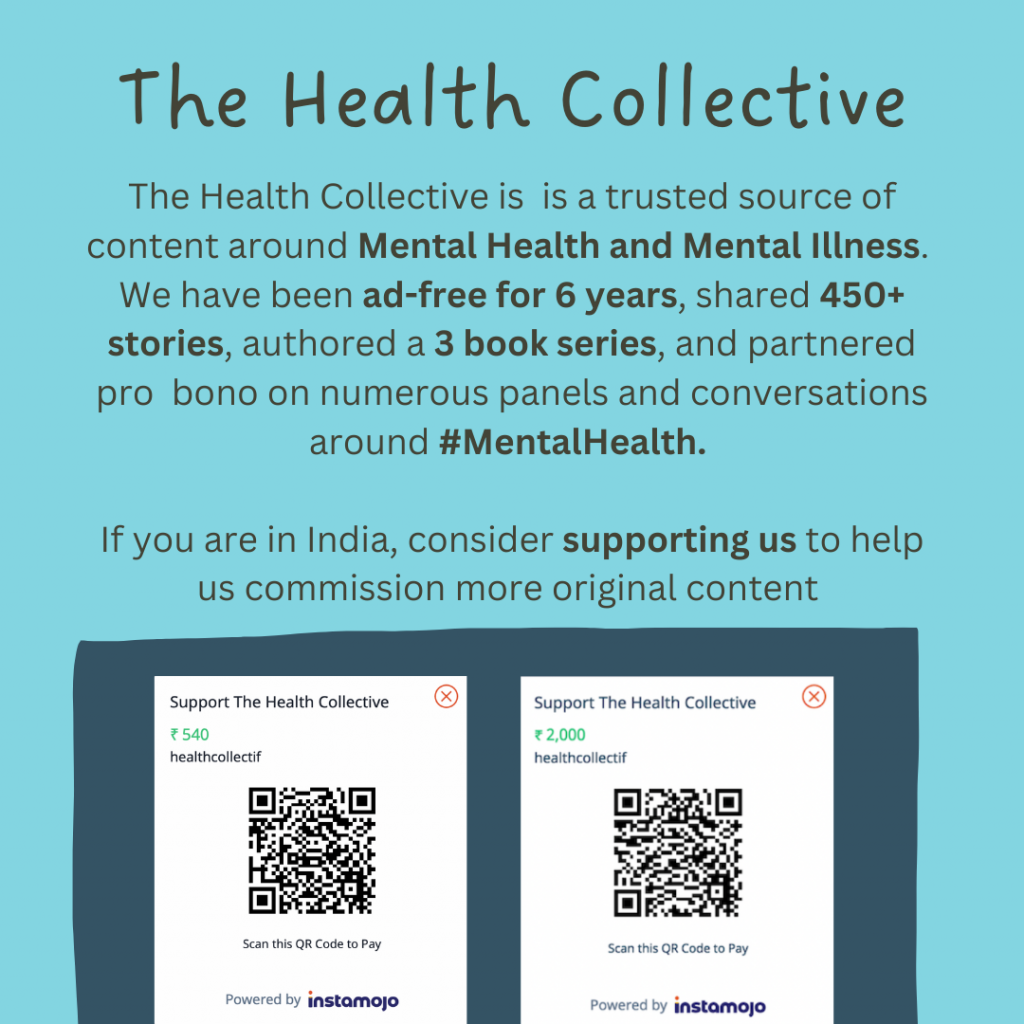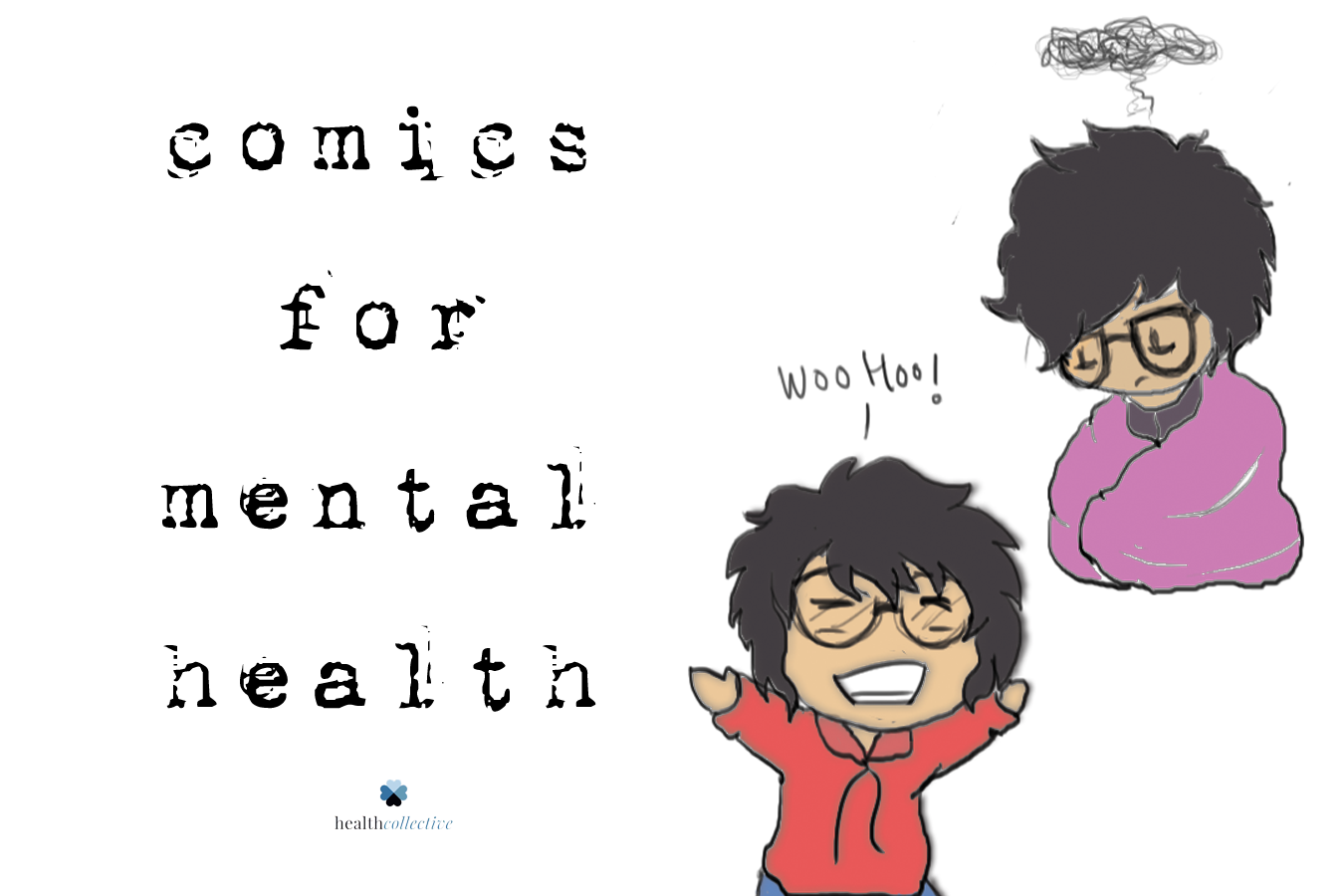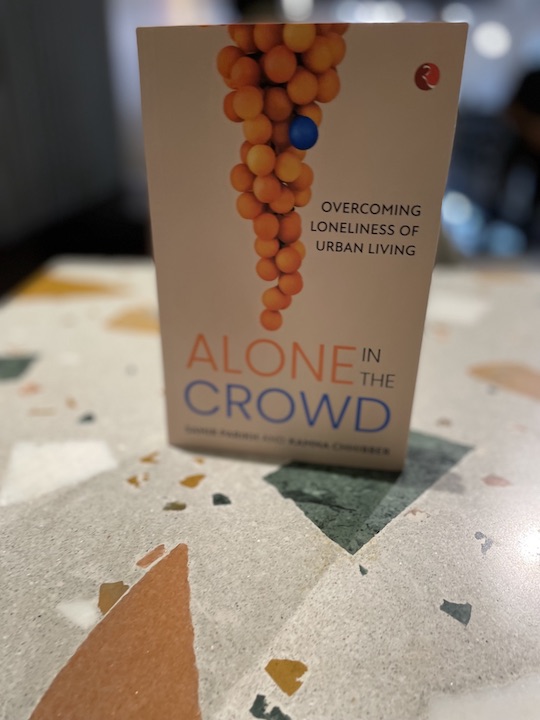Your Stories: Navigating the Map of an Anxious Mind
Filmmaker-artist-curator Anuj Malhotra worked with architect-duo, Architecture for Dialogue (AfD), filmmakers Mahesh S and Gaurav Puri, and sound designer Ketan Dua to build the gaming universe The Serpent of a Thousand Coils, delving into the minds of those with anxiety and OCD. Ayushi Khemka explored the game and did this interview with Anuj Malhotra for The Health Collective
Anuj Malhotra, founder of the film collective Lightcube, created The Serpent of a Thousand Coils for the new season of programming at the Science Gallery Bangalore. A gaming universe, it takes players through the labyrinth of a mind on anxiety and Obsessive Compulsive Disorder (OCD). It’s a part of the museum’s series called Psyche, which advocated that artists propose work expressing internal mindscapes through diverse forms of media.

Malhotra had lived with symptoms of OCD from the time he was about 15. Over the next one and a half decades, he says he managed daily life with “a mediated version of the condition”, navigating the rough terrain of his mindscape. Then certain life events, compounded by the first wave of the pandemic “caused the glass to topple over for me,” he says. He experienced the first debilitating and aggressive manifestation of the condition, which pushed him towards a journey of self discovery. He found his way through online resources, therapy, and discourses – some modes and methods helped, some didn’t.
The process of recovery from OCD constitutes a disentanglement from the complex, internal embroidery of our own ego; in summary, one must undo oneself
Anuj Malhotra
Here, he talks about what led him to create the game, what players can expect from it, and resources that can help.
- How did The Serpent of a Thousand Coils come about?
I felt that perhaps I may be in a position to share my ongoing realisations about the mechanisms of anxiety in general, and OCD in particular, with others who may find it useful. It was really as a response to this call — and as a personal desire to record for my own review my learning — that I, along with my remarkable collaborators, conceived of the project.
The intention was to turn the condition inside out and reveal its architectural basis — in how it is expressed on the body of its sufferer as an endless, infernal cycle of loops without an exit.
2. What really helped you in your own recovery of anxiety and OCD?
It was in the wading through a jungle of information that is available to us today that I chanced upon the work of Dr. Albert Ellis, and more specifically, upon REBT, the therapeutic school he pioneered. I began to self-administer REBT until I discovered Dr. Swati Khanolkar and In-Vivo, her REBT school based out of Mumbai. It was Swati who introduced me to the work of Daniel Kahneman and Amos Tversky in Thinking, Fast and Slow, their pioneering book on decision research, and which she advised I read as a way to realise why our intuition works the way it does.
3. In the gaming space, we see that the player is asked to make choices, depending on which, the player either moves on or gets stuck in a loop. While it does seem to reflect aptly the workings of a mind running with anxiety perhaps, how did you deal with the questions of maintaining nuance?
The game declares a narrative circumstance to the player, and as they then traverse through its universe, it poses to them a set of conundrums, each of which have two possible answers.
Basis the answer selected by the player, they either make progress, or get stuck within eternal recurrence. This is a representation of the design of the anxious mechanism itself: it presents to its sufferer an endless spiral of ‘what-if’ propositions, and it is only when they can reconcile to not knowing the answer to these, that their nerves begin to calm down. However, if they continue to attempt to resolve these queries in order to attain a utopia where doubt does not exist, they are doomed to remain stuck.
Here, our ambition was not to enforce a didactic stream of information upon our player, but to induce in them – through silence, transepts of still time, a stream of profound experience – a realisation of how the anxiety mechanism sustains itself within the bodies of its sufferers. To this aim, the team that built The Serpent of a Thousand Coils consciously chose to prioritise immersion, tactility, sensuality and a richness of stimuli above pure information, so that the player does not merely learn their lessons from the gameplay, but instead, glean these slowly, and on their own account. This mechanism was chosen consciously also because it mimics a founding principle in REBT itself, which is that our brain does not understand words, but can only learn through lived experience.
Secondly, the game had to fulfill a purpose both as an artistic project, but also as a learning tool. We tried therefore, through our work and in our execution of the game, to arrive at this tenuous balance; to render an experience that nonetheless also instigates contemplation; an erotic object that encourages distance, still.
4. The gameplay offers the player the choice of keeping their audio and video on and interacting with other players in real time. Was it a conscious decision to keep the game multiplayer, perhaps in a bid to explore some aspects of mental health together or was it a technical setup?
The game is designed to be a single-player, solo experience – much as anxiety, or OCD is. The multiplayer-aspect of it is an inherent feature of Gather Town, the platform we mounted the game on. For The Serpent of a Thousand Coils, all of us decided together to actually reverse-engineer – almost as a grotesque paradox – the foundational commandment of the platform and instead employ the facilities it provides in terms of character movement, landscaping, the two-dimensional scroll and multimedia capability to cultivate the fictional, small town within which the game is set.
5. While playing the game, what struck me are its design elements and how they blend with and enhance the storytelling format. What was the imagination process for you like, in terms of the relationship between mental health and the visual?
In my own experience as a sufferer, but also as a student of anxiety, an essential step in my own recovery was to be able to realise the concurrent, almost parallel existence of the realm of our mind with that of our bodily, somatic existence. Our suffering results when we depart the latter and become embroiled in the machinations of the former.
I practise a basic form of Vipassana, but this fundamental truth – of the cosmos ‘as it is’; irrefutable, irreducible, and our body as the primary instrument by which we can remain attuned to it – is encoded in philosophical or spiritual schools of thought that may range from ancient Greco-Roman, to the Sufi, and of course, to the Indic, through its various tributaries.
For all of the individuals involved in the project – from AfD, to filmmakers Gaurav Puri and Ketan Dua, my co-writer Mahesh, and myself – it became imperative that we create a world where the simultaneity of these two streams is given an explicit and an overly visible form. It was decided very early on in the process that the questions – the what-if propositions of an anxious mind – are afloat as a layer above the universe of the town; much like the material environment within which we all reside, and the grotesque mire with which our mind overlays it.
It is not a secret that our mind continues to remove us from the context of our actual life – we may be seated inside of a traffic jam but thinking of an embarrassing incident from 10 years ago. We wanted our players to experience a feeling of being here but elsewhere; to drift in and out of attention, to attend to the prompts of the omnipresent anxiety in town, but to also, simultaneously, be immersed within the saturation of their actual, physical environment – an experience not unlike life itself.
In order to attempt this, we worked closely with AfD to arrive at a design of the universe of the game that took its typological cues from the Snakes and Ladders game, the serpentine bylanes of residential colonies, the bhoolbhulaiya, and of course, neural networks. Finally, many of the floating, image-implants within the universe of the game are meant to poetically or tonally evoke the contents of the stories themselves; again, not unlike how an overtly sensitised nervous system works, and where even faint triggers may begin to evoke disturbances within the body of the sufferer.
6. The stories in the game not only talk about an individual’s journey in life; there are a lot of references to the impact the community has on the protagonist. What are the ways in which you think communities impact one’s mental health?
At some point in my own journey as a sufferer, I began to realise that OCD should actually be called – even if as an euphemism – the Obsessive Cultural Disorder. Anxiety is after all a survival response conditioned within us as a species and it has been thoroughly documented how our ancestors needed it to remain alive within the wild. While it developed therefore as an evolutionary hack that would ensure the survival of the species, much of its more extreme manifestations in the present day are but an anachronism; a genetic leftover: as we transitioned to a sedentary, agricultural and protected way of life, the hormonal surge set off by anxiety serve no purpose except to preserve a state of gratuitous alarm within our bodies. This is obviously a crude reduction, but the point of this thesis is eventually to establish how anxiety is the natural byproduct of a situation where communities develop a common trove of prescriptions that are then embedded deeply into the subconscious of each of their individual members.
…
In general, therefore, any tribal arrangement – society, a residential community, a peer network, a religious group – deigns to its members a set of preordained, oppressive constructs that are often without origin and seem therefore cosmically approved. These then manifest within the consciousnesses of its members as a series of ‘shoulds’ or ‘musts’, as Ellis identifies them – and terrorise them into submission. Rene Girard observes this as mimetic desire, and examples abound around all of us in our day-to-day lives: we live for instance inside of a national culture in an era where deviancy of any sort is not merely condemned or mocked, but actively punished. This sort of a circumstance is thus the perfect breeding ground for anxieties to cultivate – anyone who departs from the ‘normal’ stands to be excluded, and there is no worse retribution for a human being than banishment. In a situation like this, fear is natural.
Incidents of mental illness will naturally find greater occurrences within oppressive systems, since existence within these is based on their constituents’ ability to deny themselves and conform to a system whose demands they do not have the agency to comprehend or curate. This is also the reason why the fictional small town which is the primary site for the game is replete with gossip, rumour, conspiracy and murmurs – these are after all the sinister mechanisms by which society impresses itself upon the soul of the individual.
7. The digital spaces are seeing a lot of ventures and projects on mental health lately. While the increasing conversation on mental health is certainly the need of the hour, do you think the intersection of the digital space and mental health gives rise to a bunch of concerns surrounding ethics?
Certainly, but I believe every single act does – regardless of the space or the platform through which it is rendered – whether digital or analog, physical or virtual, visible or invisible. I do not know if any exercise, especially if conducted in the public sphere, is absolved of the question of ethics. At the same time, I think the only approach here is to lean into these difficult inquiries and use their opportunity to work out our own, personal methods of negotiation. This endeavour is inescapable, but valuable, ultimately.
When I put out the very first post announcing the launch of the game, a caring friend called me to advise that ‘I should not put out the details of my struggle out in the public’ — that it may be misconstrued or worse, misused. I totally understand his perspective and respect it. However, I am also deeply aware of the isolation I experienced when the condition first set in, and how I was at a complete loss in terms of the resources, assistance, or even the vocabulary I can begin to employ in order to catalyse my recovery.
My desire to help produce the game — and I am deeply grateful to Science Gallery Bengaluru but also the generosity of my collaborators who helped accomplish this — was borne out of the desire to help enrich public consciousness around the subject, even if by an iota. In this, we do risk putting forth a thesis that some may deem incomplete or inaccurate, or not representative of their experience. And yet, I truly believe that discourse around mental health, especially since it is threaded so often through a multitude of subjectivities, will only gain from a plurality of voices, each of which attempts to express their own truth, hopefully with tenderness, as also with sincerity. This will not only help encourage conversation around the subject and widen the space available for it – but also validate the experience of various individuals who suffer not only from the gross effects of this condition, but also the tyrannical shame it imposes upon them.
8. What would you like people to know about recovery from OCD?
Recovery from OCD is an extremely time-consuming and laborious process and involves a rigorous process of self-education, contemplation and practice. The incentive here is that a person who goes through it sincerely will emerge overall, a more centered, secure and resolved individual.
Some resources shared by Anuj:
David Bohm and Jiddu Krishnamurthi





Pingback: Your Stories: What It’s Been Like to Live With OCD – The Health Collective India